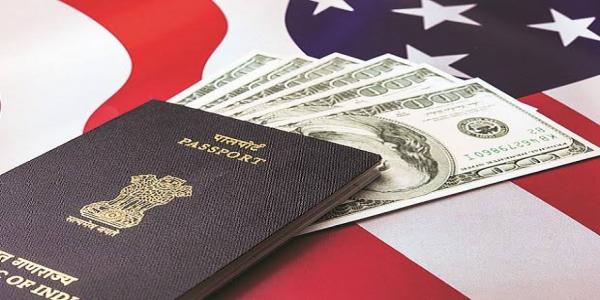
New Delhi: The US has approved a higher number of H-1B applications (both for initial visas and visa extensions for continued employment) in 2019. The number suggests that the demand for these work visas has not gone down despite processing regulations getting more stringent post-2015. The higher approval number is also a relief to Indians since they are the dominant holders of H-1B visas.
Note that, the H-1B program allows employers in the United States to temporarily employ foreign workers in occupations that require the theoretical and practical application of a body of highly specialized knowledge and a bachelor’s degree or higher in the specific speciality, or its equivalent.
According to the United States Citizenship and Immigration Services (USCIS) data, in 2015, 2.88 lakh H-1B visa applications were approved (95.7%) by the USCIS. This figure for fiscal 2019 has gone up to 3.89 lakh (84.8%). Last year, the number was 3.35 lakh (84.5%). The latest statistics for the 12-month period ended September 30 were recently released by USCIS.
While country-wise data has not been released for 2018 and 2019, statistics reveal that in past years, over 70% of the aggregate H-1B visa applications for new jobs and visa extensions have been given to people born in India.
Snehal Batra, managing attorney, NPZ Law Group was quoted in a publication saying, “It used to be that if the job required a minimum of a bachelor’s degree (or foreign equivalent) and the beneficiary (whose H-1B visa was being sponsored by the employer) possessed this qualification, the H-1B application was likely to be approved. Not anymore, as is reflected in the spate of requests for evidence (RFEs) and lower approvals post an RFE.”
USCIS data for 2019 shows that extreme scrutiny of H-1B applications continued. Requests for evidence (RFEs) were sought in about 40.2% of cases from sponsoring employers to justify the visa applications, up by 2 percentile points compared to the previous fiscal ending September 30, 2018.
Indian companies are the biggest beneficiaries of the H-1B visa, accounting for over two-thirds of all visas issued. In the last two years, there has been increased scrutiny of these visa applications, resulting in an increased number of requests for evidence (RFE) & visa rejections. As per USCIS, the top three reasons for an RFE are: to ascertain whether the job is a speciality occupation to warrant hiring of an H-1B worker; to ascertain a bona fide employer-employee relationship; and to ascertain the availability of work at third-party worksites, where the employee would be deputed during the H-1B visa tenure.
Immigration expert affirm that there is a spike in denial of visa applications, even after additional information is submitted an RFE. The expert was quoted saying, “In fact, applications for visa extensions are subject to the same rigorous scrutiny as new applications.”
Only 1.20 lakh applications were approved, as against the 1.84 lakh applications that were subject to the RFE procedure. The approval rate of H-1B applications, after obtaining additional information from the sponsoring employers, was 65.4% during fiscal 2019, a slight rise from the previous year’s 62.4 %.
Data reveals that post-RFE approval ratio was as high as 83% in fiscal 2015, but it has been steadily dropping. In fiscal 2017, it was down to 74% dropping further to 62.4% in fiscal 2018. However, it picked up slightly by 3 percentile points in fiscal 2019. Experts believe that currently, determination of whether a job is specialised or not, is a factor which will continue to dominate the processing of H-1B visa applications.
Worth mentioning here is that USCIS has launched an H-1B Employer Data Hub to provide information to the public on employers petitioning for H-1B workers. The data hub is an effort to increase transparency in employment-based visa programs by allowing the public to search for H-1B petitioners by fiscal year (back to FY 2009), NAICS code, employer name, city, state, or ZIP code. This will give the public the ability to calculate approval and denial rates and to review which employers are using the H-1B program.
Source:-timesnownews
Comments are currently closed.